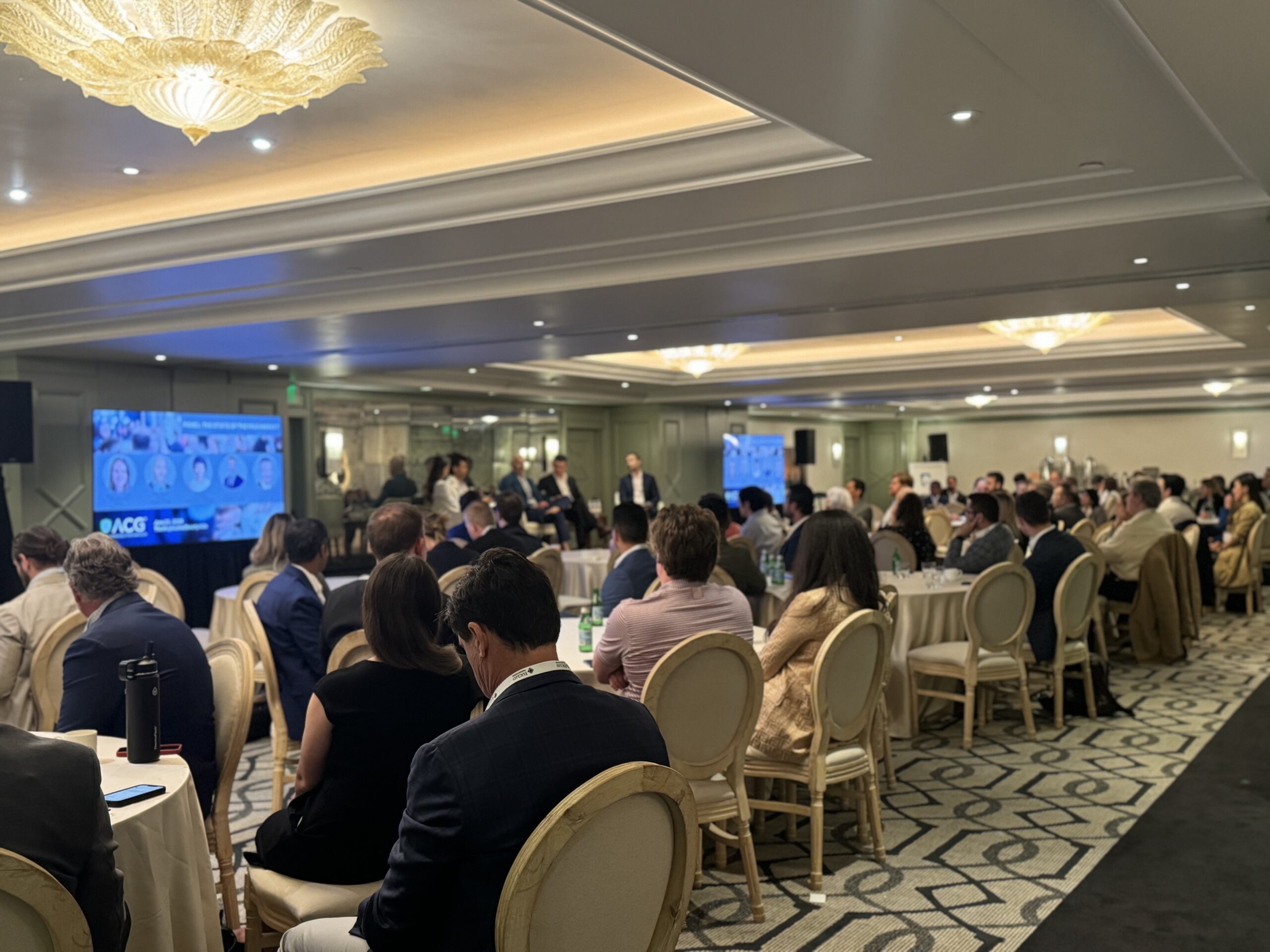Insuring the M&A Deals of the Future
The insurance industry is responding to the new normal of dealmaking, as panelists at ACG Los Angeles’ recent Transactions Solutions Symposium revealed

As the middle-market M&A landscape continues to evolve rapidly, so do the insurance offerings used by dealmakers.
At ACG Los Angeles’ recent Transaction Solutions Symposium, held at the Maybourne in Beverly Hills on June 25, attendees heard insights into the emerging insurance solutions for M&A transactions.
The day began with The State of the M&A Market panel, where representatives from private equity, investment banks, law firms and lenders discussed the hurdles to getting deals across the finish line. Dealmakers anticipate ongoing change thanks to macroeconomic shifts, regulatory pressure and more, even as they begin to accept that more expensive capital and more diverse risk are likely here to stay.
ACG Event Recap
WHAT: ACG Los Angeles Transaction Solutions Symposium
WHERE: The Maybourne, Beverly Hills
WHEN: June 25, 2024
THE TAKEAWAY: In an evolving M&A market, insurance products are helping dealmakers mitigate risk and get comfortable with the new normal of transacting.
Against this backdrop, the insurance sector continues to explore ways to support the M&A community and its risk-mitigation needs. Much of the day’s programming focused on emerging insurance products and how they’re evolving to address the “new normal” of dealmaking, with perspectives from panelists representing insurance brokers, attorneys, accountants and other advisors.
Reps and Warranties Insurance
Representations and warranties insurance (RWI) is one product that is growing in popularity and rapidly maturing. Designed to protect buyers from losses incurred from a breach in a seller’s representations of their business, RWI is becoming more commonplace in M&A transactions, giving insurance carriers insight into developing trends, according to the Reps & Warranties: Claims and Related Underwriting/Market Trends panel.
One panelist noted that while financial statement-related claims remain the most common claim category, compliance-related claims have grown more prevalent over the past year. He also pointed to a rising number of claims related to condition of assets, a space in which it is particularly challenging to value losses.
These trends are anecdotal, and it may be too soon to understand exactly why they’re occurring. But panelists acknowledged that as RWI grows in popularity, policyholders seem to be broadening their use of the product beyond the scenario of a breach of financial statements.
Contingent Risk Insurance
Among the newer offerings is contingent risk insurance, a product explored during the Contingent Risk Solutions in M&A and Beyond panel.
Unlike other insurance solutions like RWI, contingent risk insurance covers known legal risks, like a claim or lawsuit that has already been filed. As one panelist explained, there are several types of this insurance. They include judgment preservation insurance, which protects a policyholder against the risk of a judgment’s reversal on appeal, and adverse judgment insurance, which is triggered when losses are incurred after a final judgment in a case that is not in favor of the policyholder.
These products have various applications in M&A. Panelists pointed to cases in which a prospective buyer may be aware of a litigious entity going after companies like the acquisition target; such insurance can give the buyer confidence in their investment despite the threat of a lawsuit.
Panelists expressed interest in how contingent risk insurance will evolve as awareness and use of the tool grow.
Tax Liability Insurance
Tax liability insurance (TLI) is another emerging insurance product with use cases for M&A, according to speakers on the Tax Liability Insurance: Current Trends, Controversies and Claims panel.
Investment tax credits are quickly becoming a prominent driver of interest in TLI. “These days, there’s a concept called transferability—to transfer a tax credit to someone to reduce tax liability,” said one panelist. “More and more, it’s a necessity to get tax insurance because no one will buy a credit unless they are sure they can use it.”
Panelists said they anticipate a growing need for this product in tax incentive-heavy spaces like renewable energy.
Several speakers noted that these emerging insurance solutions for dealmakers are relatively new to the market. With limited historical data available on claims trends, it can be difficult to ascertain how newer products, particularly litigation risk insurance, will function.
The other side of that coin, however, is that these products can evolve alongside the changing needs in today’s uncertain, fluctuating environment.
The ‘Insurance’ of Due Diligence
Insurance can provide a level of certainty for dealmakers to move a deal across the finish line. But it is not a replacement for due diligence—rather, due diligence illuminates which insurance products are necessary, said panelists during the event’s final session, Due Diligence Best Practices.
Insurance products can address a range of risks, but financial issues are still a key source of insurance claims, particularly with RWI. One panelist emphasized that amid today’s shifting risk environment, quality of earnings (QOE) reports remain essential to derisking a transaction. “It’s important to sit down and say, ‘What is the true, sustainable EBITDA analysis of this business?” the speaker said. “Equally for sellers, a sell-side QOE is a great tool to make sure their house is in order.”
Increasingly, panelists noted, there are human factors to the due diligence process that weigh just as heavily as “hard” factors like financial statements. One speaker pointed to the importance of not just getting to know a target company’s C-suite but the professionals further down the chain of command.
“A lot of deals have hockey stick revenue projections,” the panelist said. “But in tech, it’s driven by engineering and sales talent. Few people do the work to see, if they actually hit those projections, could they hire enough engineers and salespeople. Do they have the right talent in place?”
Panelists emphasized the value of communication and data flow between buyer and seller teams to reduce friction and get everybody on the same page. Today, with businesses embracing tech-enabled services, collaborating with a target’s third-party vendors, like benefits and payroll software providers, can unlock key sources of anonymized, secure data that can accelerate due diligence.
Changing M&A trends—including the rise of minority acquisitions, carve-out deals and antitrust risks—are all influencing how dealmakers approach due diligence and insurance procurement. Unlocking access to information can empower investors and sellers with the insights they need to move forward with confidence, and understand which partners and products can help facilitate a successful transaction.
Carolyn Vallejo is Middle Market Growth‘s Digital Editor.
Middle Market Growth is produced by the Association for Corporate Growth. To learn more about the organization and how to become a member, visit www.acg.org.


